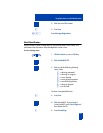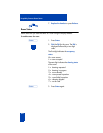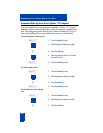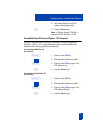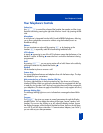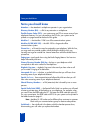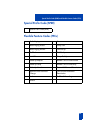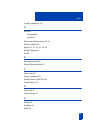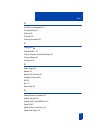
60
Terms you should know
Attendant — the attendant is a telephone operator in your organization.
Directory Number (DN) — a DN is any extension on a telephone.
Flexible Feature Codes (FFCs) - your system may use FFCs to access some of your
telephone’s features. For your convenience, the FFCs for your system can be
printed on a page located at the back of this guide.
Meridian 1 — the Meridian 1 PBX is an office communications system.
Meridian SL-100 (MSL-100) — the MSL-100 is a large scale office
communications system.
Private Line — a Private Line may be assigned to your telephone. With this line,
you may reach any outside number without dialing the digit(s) which you
normally use to get an outside line. Internal extensions cannot be dialed from a
private line.
Paging tone—tone heard when using the Radio Paging feature. You hear two
beeps followed by dial tone.
Primary Directory Number (DN) Key—the key on your telephone which
corresponds to the main number for the telephone.
Ringback/ring tone— ringback/ring tone is the sound you hear when a call
you’ve made is ringing at its destination.
Interrupted dial tone— a broken, or pulsed dial tone that you will hear when
accessing some of your telephone’s features.
Special dial tone— three consecutive tones followed by dial tone that you will
hear when accessing some of your telephone’s features.
Shared Directory Numbers — a DN (extension) that is shared by two or more
persons.
Special Prefix Code (SPRE) — the Special Prefix Code is a number you will need
to enter to activate many of the features on your telephone. For example, when
you read "Enter the SPRE code plus 87", first enter the SPRE code then press 87.
For your convenience, the SPRE code and FFCs for your system can be printed in
the tables located on page 61.
Note: Meridian SL-100 codes can be different from customer to customer.
Check with your communications group for feature code prefixes.
Switchhook — the switchhook is the button which the handset presses down,
disconnecting your call when you replace the handset.
Terms you should know




